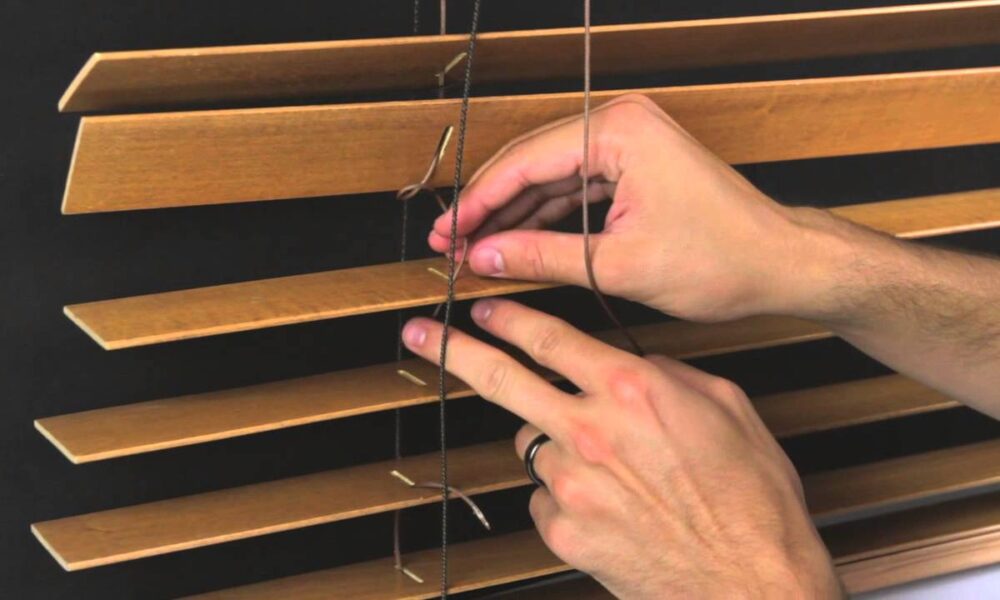Acquiring proficiency in blind repair not only makes sense, but it also enables homeowners to effectively manage their living areas. You may prolong the useful life and visual appeal of your blinds for many years by being aware of typical problems and adhering to these repair instructions. Keep in mind that maintaining your window coverings will help them remain beautiful and functional for a longer period of time.
Common Issues with Blinds
Blinds come in various types such as vertical blinds, horizontal blinds, roller blinds, and more. Here are some common problems you might encounter:
Broken or Bent Slats: Slats can break or become bent, affecting both the functionality and appearance of the blinds.
Stuck or Jammed Mechanisms: Tilt mechanisms or lift cords can get jammed or stuck, preventing you from adjusting the blinds properly.
Faulty Cord Locks: The mechanism that locks the blinds in place when they are raised or lowered may malfunction.
Tangled or Snapped Cords: It can be challenging to raise or lower the blinds smoothly due to tangled or broken lift cords.
Instruments You May Require
assemble the equipment and supplies needed before starting any repairs:
Phillips and flathead screwdrivers
Pliers
Slats to be replaced, if necessary
Cord locks or replacement cords
Cutlery
Supplies for cleaning (optional)
A Comprehensive Guide for Fixing Blinds
1. Assessment and Preparation
Identify the Problem: Examine your blinds closely to determine what needs to be fixed. Is it a broken slat, a jammed mechanism, or a tangled cord?
Prepare Your Workspace: Remove the blinds from the window and lay them on a flat surface covered with a clean cloth to prevent scratching.
2. Repairing Broken or Bent Slats
Remove Damaged Slats: Depending on the type of blinds, you may need to unhook the damaged slats from the ladder cord. Use pliers to gently release the slats.
Replace with New Slats: Insert the new slats by threading them through the ladder cord, ensuring they are aligned properly with the existing slats.
3. Fixing Jammed Mechanisms
Inspect the Tilt Mechanism: If the slats won’t tilt, check the tilt mechanism. Often, this can be fixed by realigning or replacing the tilt rod or mechanism.
Replace Cord Locks:It could be necessary to replace the cord lock mechanism if lifting the blinds doesn’t keep them in place. As directed by the manufacturer, unscrew the previous cable lock and replace it.
4. Repairing Lift Cords
Untangle Cords: Carefully untangle any knots in the lift cords using your fingers or a pair of scissors if necessary.
Replace Snapped Cords: If a cord is snapped, cut it above the knot and thread a new cord through the blinds, tying a secure knot at the end.
5. Reinstallation and Testing
Reinstall the Blinds: Once repairs are complete, rehang the blinds carefully, ensuring all components are securely fastened.
Test Functionality: Make sure all the problems have been fixed by giving the blinds a full range of motion tests.
Tips for Maintaining Longevity
To minimise the need for repairs and increase the longevity of your blinds:
Frequently clean your blinds to avoid dust accumulation.
Use moderate force when adjusting blinds.
Replace damaged components promptly.
Keep pets away from blinds to prevent damage.
Conclusion
You may successfully fix typical problems with your window blinds and preserve their usefulness and visual appeal by adhering to these instructions. You can extend the life of your blinds and take advantage of their benefits for many years to come with a little work and the correct tools. It’s a good idea for every homeowner to learn how to handle little repairs as soon as possible because it can help you avoid having to replace your blinds completely.
